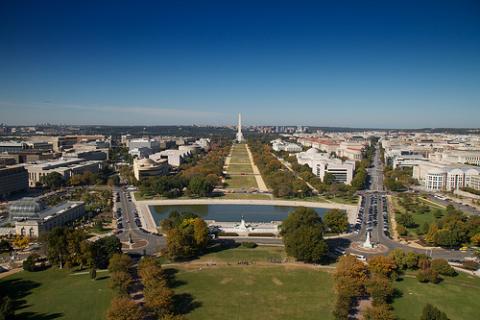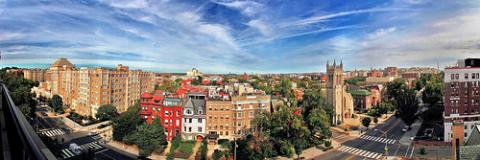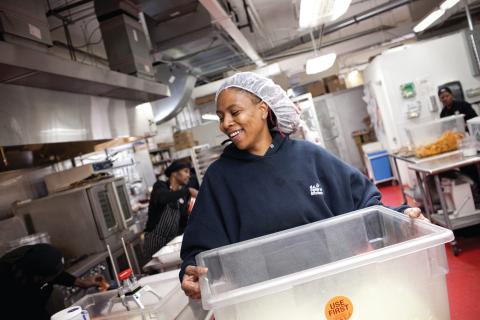When most people think of Washington, D.C., they think of a city of iconic monuments, the Smithsonian museums, and the three branches of the Federal government. But Washington is also a thriving community of more than half a million residents. The District’s population, which lost over 200,000 residents between 1950 and 2000, has rapidly rebounded in recent years. As recently as 2007, the District was home to only 574,000 residents. By 2014, population had climbed back to 659,000 due to an influx of young, largely white residents. In 2011, the percentage of African American residents in the District fell below 50 percent for the first time since 1960. Current data indicate that African Americans are 49.5 percent of residents, non-Latino whites 35.8 percent, Latinos 10.1 percent, and Asians 3.9 percent, with the remainder of mixed descent or other.
Alongside this population gain has been the revitalization of many District neighborhoods and a recovery of District government finances. In 1997, the District's financial condition was bad enough that a federally imposed "Control Board" placed the District government under outside trustee control. Now this situation has completely turned around, and the District government frequently runs surpluses.
But as the dynamic of rising prices and displacement of thousands of long-time African American residents attests, redevelopment has created new challenges. Community wealth builders accustomed to working in a "weak market" city are now finding themselves having to adjust rapidly to the different challenges of working in a city with a "strong market". Gaining increasing prominence are community land trusts and other forms of "shared equity housing," which enable working people who cannot afford to purchase a traditional home to still have many of the benefits of homeownership, including the right to share in equity appreciation. City First Enterprises, for instance, has developed over 217 permanently affordable land trust homes, an investment of $4 million, since its establishment in 2010. A related shared equity strategy is the development of limited equity housing co-ops. Under District law, when a multi-family apartment comes up for sale, tenants must be offered a chance to purchase the building. Both ONE (Organizing Neighborhood Equity) DC and the Latino Economic Development Center have successfully organized tenants for this purpose, helping preserve hundreds of units of affordable housing over the past fifteen years in this manner.
Also noteworthy are efforts at job creation and community-owned business development. One notable example is City First’s Community Wealth Building Initiative, in which City First is working with a consortium of local funders to build community wealth and harness the spending power of area anchor institutions by creating green, sustainable, employee-owned businesses that provide anchors with needed products and services. The first such business, Community CleanWater Management Group, provides maintenance, inspection and monitoring services for green stormwater infrastructure in neighboring Prince George’s County, Maryland, launched in 2015.
An overview of these and other community wealth building efforts follows:


